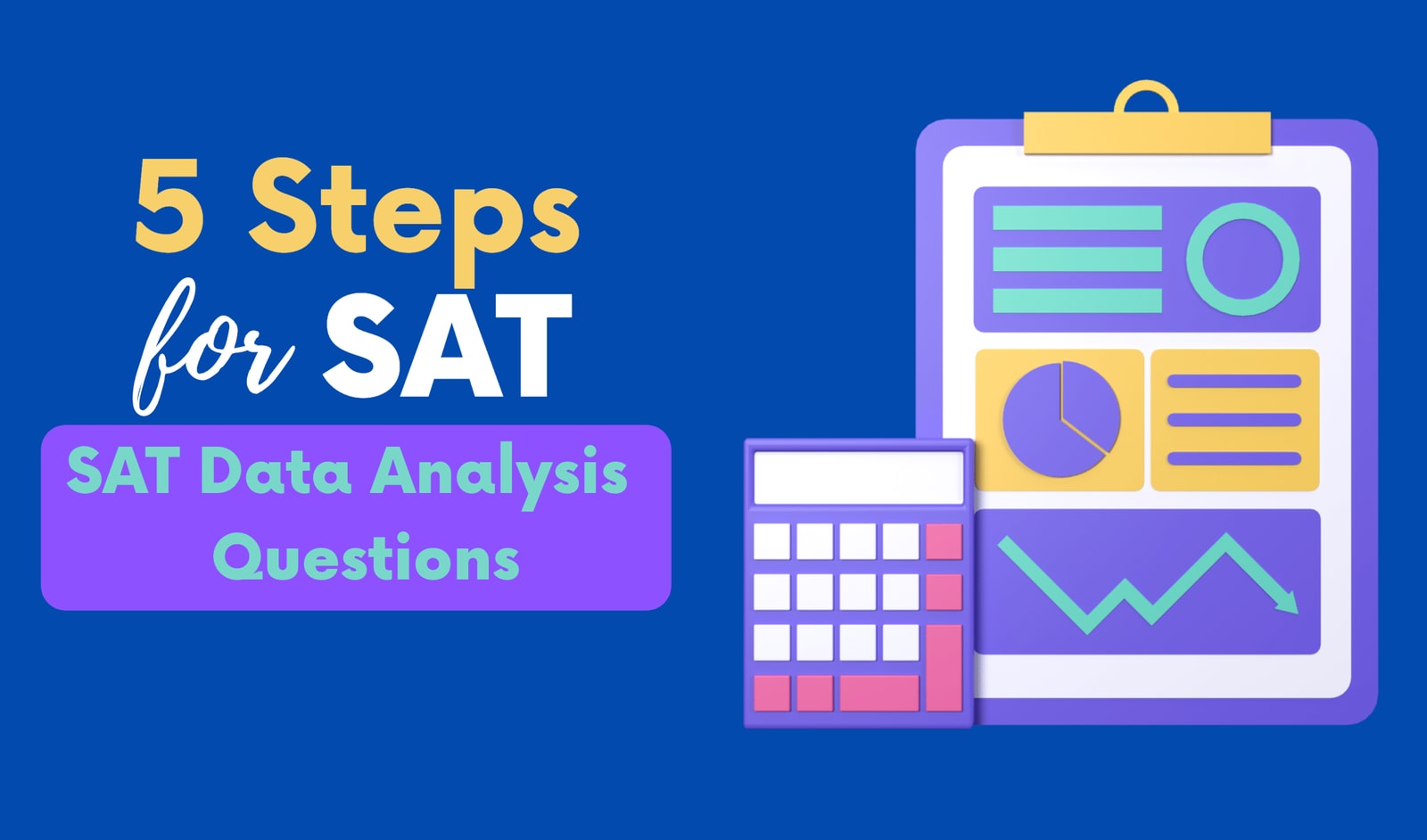5 Steps to Master SAT Data Analysis Without the Stress
Date Published

Want to approach SAT data analysis questions with confidence, accuracy, and less anxiety? With a clear strategy, you can break down even the most complex data problems into manageable steps. This article walks you through an effective five-step method, complete with examples and tips, to help you maximize both speed and precision.
Introduction
On the SAT, data analysis questions challenge you to interpret information from graphs, charts, and tables, drawing on both math skills and analytical thinking. Instead of resorting to guesswork, following a systematic five-step process allows you to tackle each problem methodically, lowering stress and improving results. In this guide, you’ll learn how to work through data sets, understand questions, choose the right solution, and verify your answer—all reinforced by practical examples. By making data analysis more approachable, you’ll be able to face test day with assurance. Ready to demystify these questions? Let’s get started!
Step 1: Analyze How the Data Is Displayed
Start by taking a close look at how the information is presented. SAT data analysis items may use bar graphs, scatterplots, pie charts, or data tables. Focus on:
· What the axes label and what units they use (dollars, years, percentages)
· The scale intervals—watch for scales that might exaggerate or minimize trends
· Any footnotes or keys that clarify symbols or categories
Tip: Quickly jot down important points or highlight notable figures and trends to direct your attention.
Example: Imagine a bar graph showing average monthly temperatures. Double-check if the vertical axis starts at zero and what temperature units are used (Celsius or Fahrenheit). Details like these can change your interpretation. Summarize the graph in one clear sentence, such as “July has the highest average temperature at 85°F.” This summary anchors your analysis and helps prevent misreading as you proceed.
Step 2: Clarify What the Question Wants
After grasping the data setup, read the question carefully and determine:
· What is the question really asking for—a particular value, a comparison, a trend, a rate of change, or a prediction?
· Which parts of the data are relevant? Identify only the columns, rows, or segments you need.
· Will you need to use a specific equation or formula? For example, percent change or slope.
Example: If the question asks, “The number of users increased from 200 in January to 260 in February. What is the percent increase?” you know you’ll need:
Percent Change = (New – Original) / Original × 100%
By pinpointing exactly what’s required, you avoid unnecessary calculations and hone in on the right method, reducing common mistakes such as calculating the wrong statistic.
Step 3: Use the Right Mathematical Approach
Once you understand the task, decide what mathematical tool to use:
· Percentages and ratios for comparisons or trends
· Mean, median, and mode for questions involving averages
· Slope or rate of change for line graphs or scatterplots
· Area and proportion for pie charts or histograms
Example: To find the percent increase from 120 to 150:
(150 – 120) / 120 × 100% = 25%
For trend lines, calculate "rise over run" (change in y over change in x). Clearly show your work to catch and fix arithmetic slips, and double-check that your result makes sense with the data's context and units before moving on.
Step 4: Eliminate Incorrect Answer Choices
After you’ve calculated your answer, use process of elimination to boost your odds:
· Remove any answers outside the logical range of the data
· Cross out options that contradict the overall trend you identified
· Be wary of answers designed to trap test-takers who misread the axes or miscalculate key values
Example: If you’ve determined a 12% decrease, and the answer choices are −8%, −12%, −20%, or +12%, immediately eliminate the positive choice and the option that is far too large (−20%), then double-check between the remaining possibilities. This narrowing process saves valuable time and increases your accuracy, especially under pressure.
Step 5: Sharpen Your Skills with Focused Practice
Mastery comes from repeated, purposeful practice. Build these habits into your study routine:
· Work through real SAT questions or quality practice problems daily
· Practice reading data displays and pinpointing the most relevant numbers
· Regularly review your errors, analyzing why you made them and how to avoid them next time
By following this five-step system and backing it up with targeted practice, SAT data analysis questions will become much less intimidating. Stick with the process and you'll be ready to handle any dataset the test throws at you—confidently and effectively.
Mastery Through Reflection and Adjustment
Preparation for the SAT goes beyond just practicing problems—it’s about learning, adapting, and steadily improving:
Weekly Reviews: Revisit your error log and work through the toughest questions to target persistent weaknesses.
Adjust Strategies: If timing is still a challenge, experiment with your pacing or refine your approach to trickier problems.
Set Milestones: Motivate yourself by celebrating streaks of correct answers or measurable improvements in speed.
“The only real mistake is the one from which we learn nothing.” — Henry Ford
Reflecting on both your progress and mistakes will transform each practice session into a valuable opportunity for growth. To further accelerate your improvement, try integrating the Best SAT Score platform into your study plan. Our Adaptive Full-Length SAT Practice Tests provide a genuine test-day atmosphere while tailoring question difficulty and offering thorough performance analytics. Additionally, the Expert-Curated SAT Question Bank brings you real SAT problems with step-by-step explanations, so you can focus on mastering frequently tested concepts and avoid pitfalls.
By staying engaged in this process of focused practice, honest self-review, and smart use of digital tools, you’ll see your data analysis abilities—and your SAT scores—reach new heights. Good luck!
Related Posts

Discover proven strategies to decode data graphics on the SAT, enhancing your reading and writing skills for success.

Master the SAT Reading section with essential strategies for big picture questions, enhancing your comprehension and boosting your score.